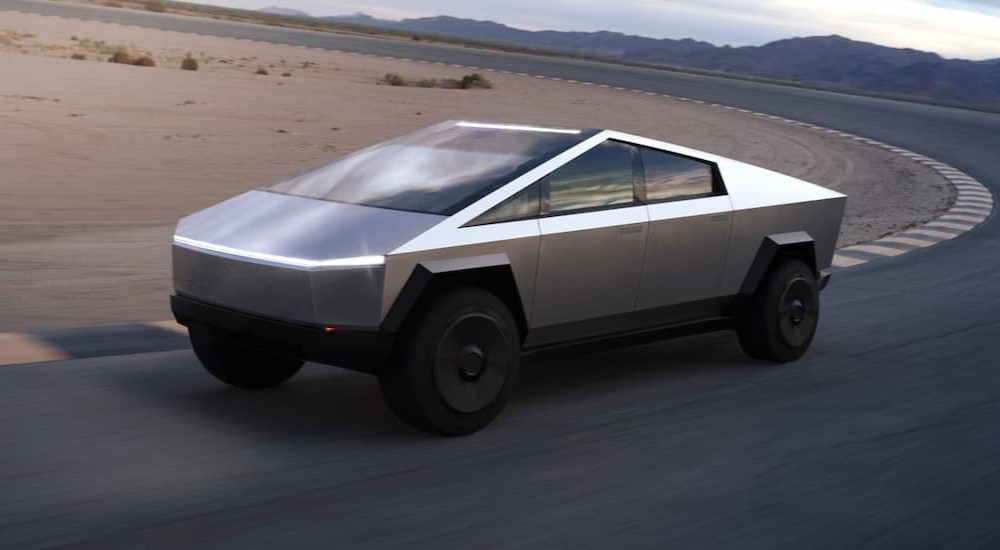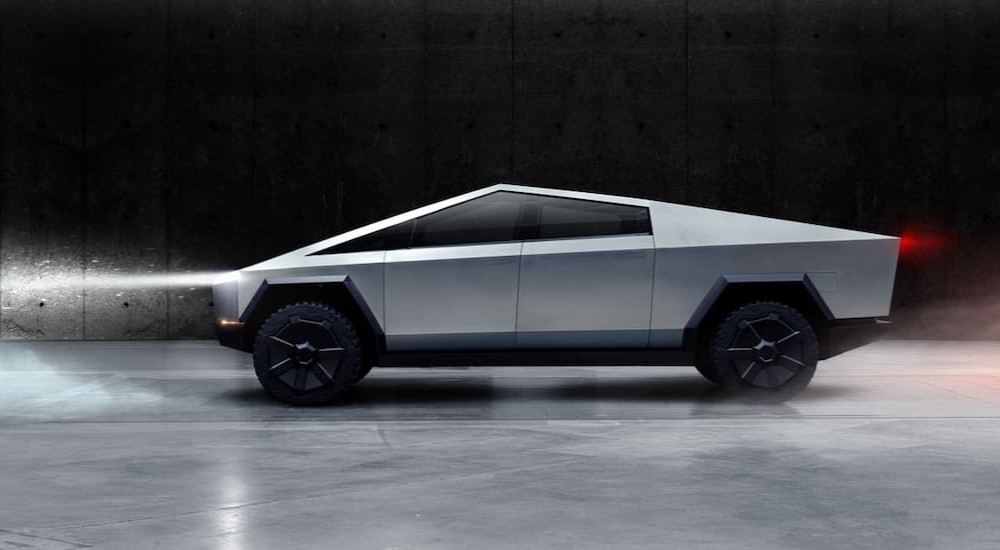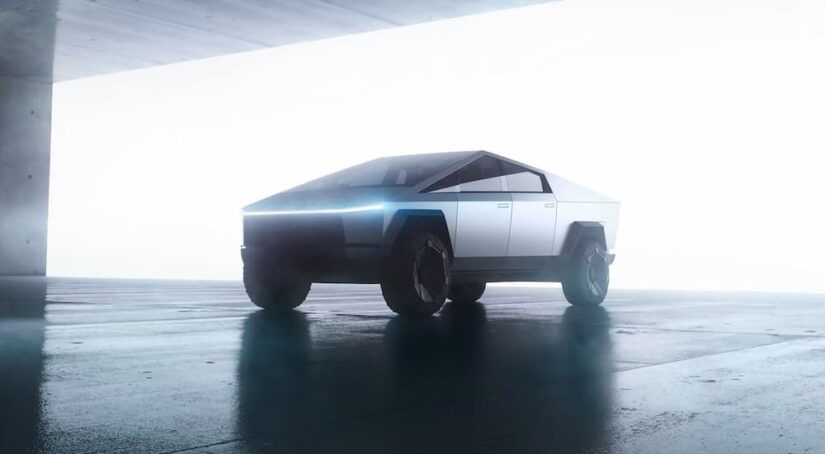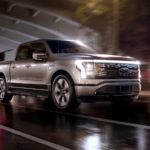There’s no denying the hype that surrounds the Tesla brand. Throughout the years, few automakers have managed to so deftly capture the attention of the driving public, bringing something entirely new to the market with their game-breaking approach. A lot has been made of the “move fast and break things” ethos of the tech startup world, which has seen companies like Airbnb and Uber turn entire industries on their head by roundly rejecting the conventional approach.
Tesla has brought that start-up ethos into the automotive industry, serving as a true disruptor with its all-electric fleet and direct-to-consumer sales approach. With almost two million EVs delivered since 2013, there’s no denying that Tesla has earned its place in automotive history, but as the brand prepares to expand beyond the familiar realm of sedans, SUVs, and sports cars, it could face its biggest challenge yet: the humble pickup.
The workhorse of the automotive world had largely resisted electrification until the last few years when Ford introduced an all-electric version of its full-size pickup in the F-150 Lightning. If early sales figures are any indication, the F-150 Lightning has done a good job of converting traditional pickup drivers to the EV lifestyle, but Ford has one major advantage in that category: brand recognition. Generations of drivers have grown up behind the wheel of a Ford F-Series truck, which makes selling longtime F-150 fans on the merits of an EV version that much easier.
But what about Tesla? With its Silicon Valley roots and unorthodox approach to the industry, the brand doesn’t have much of a track record when it comes to the pickup segment, but what the brand lacks in history, it aims to make up for in pure innovation. With its bold design, all-electric powertrain, and those one-of-a-kind Tesla touches that have earned the brand such a cult following the Cybertruck is unlike any pickup to hit the market, but is the Tesla Cybertruck a good buy, and how does it stack up against other EV pickups? We’ll explore all that and more as we dive into all things Cybertruck.

Range
Range is often one of the first factors drivers will consider when choosing between EV models. In truth, the recent growth in battery technology means that few drivers will ever actually bump up against the 300-mile range of the average EV, but for those who have a significant commute or are planning a longer road trip, it can be a make-or-break metric. When it comes to the Cybertruck, Tesla tells us to expect between 250 to 500 miles, depending on the specific trim.
The single-motor version will unsurprisingly be the most modest of the bunch, with 250 miles of range, but that bumps up closer to the 300-mile industry average when you opt for the dual-motor design. Those looking to make their charging station visits as infrequent as possible should look into the tri-motor trim, which Tesla says will give drivers more than 500 miles per charge. As far as the battery that’s making all this happen? Tesla keeps its cards close to the chest, although we know that each Cybertruck will ship with a 250-kW charging cable.
So, how does it fare against the competition? The F-150 Lightning ranges from 320 miles on the XLT and LARIAT models equipped with the extended battery pack — and up to 300 on the high-end Platinum — but is limited to just 230 for the rest of the lineup. The GMC Hummer EV, which is powered by three motors, offers around 381 miles of range, while the Chevy Silverado EV is expected to top out around 400 miles for the RST First Edition and WT trim. Lastly, there’s Rivian, which matches Chevy with its 400-mile-range R1T.
In its fanciest guise, the Cybertruck definitely has an advantage over the rest of the EV pickup horde, but the two lower models actually fall a little below average. Again, this shouldn’t really matter to most customers as even 250 miles should be more than enough for a day’s worth of driving, but if you follow the bigger is better ethos, the 500-mile-range Cybertruck might be hard to ignore.
Towing and Payload
Once reserved for the hard hat and toolbox set, pickups have become an increasingly popular choice for drivers of all stripes. There’s nothing wrong with this democratization of the segment, per se, but there are still a few metrics a truck needs to hit if it wants to pass muster. No matter how modern a pickup might be, it’ll always be measured by its towing and payload capacity, so is the Cybertruck a bonafide truck or a pickup pretender?
Again, it all depends on which model you choose. The single-motor Cybertruck is a little underwhelming, with a towing capacity of 7,500 lbs, which matches the compact Ford Ranger pickup. The dual-motor version brings it up to a decent 10,000 lbs — in the neighborhood of a full-size Nissan Titan — but the tri-motor design blows these both away with a 14,000-lb towing capacity. That’s a mighty impressive figure until you learn that the Cybertruck is technically classed as a medium-duty truck. This puts it more in league with the Ram 2500 and F-250, which offer significantly more towing capacity (15,000 to 22,800 lbs) compared to the Tesla. The Cybertruck does outclass the full-size EV segment regarding payload, however, with 3,500 lbs to the F-150 Lightning’s second-place 2,235 lbs.
Speaking of the Lightning, it maxes out at 10,000 lbs of towing, which falls just behind the R1T’s 11,000 lbs. The Silverado EV should match the F-150’s 10,000 lbs (and 1,300-lb payload) when it debuts, but Chevy has also hinted at a Max Trailering package that will double that number to 20,000 lbs. The Hummer EV is the wimpiest of the bunch, maxing out at just 7,500 lbs with a 1,300-pound payload capacity.
Performance
An EV’s all-electric powertrain creates the potential for some serious fun. With off-the-chart horsepower and instant torque, it might take drivers some time to get used to the raw power that an EV can offer, but once you settle in, it’s a whole different experience. According to an EPA Automotive Trends report, the average gas-powered pickup in 2023 had around 341 hp. Of course, this skews a little higher in the full-size segment, but when you average out the horsepower of the five EV pickups we’ve covered here, that number jumps all the way to 770 hp.
Again, Tesla has yet to release official figures, but early indications would suggest around 800 hp and 1,000 lb-ft of torque for the tri-motor setup. Combine that with a zero-to-60-mph time of just 2.9 seconds and a top speed of 130 mph, and you’ll be winning a drag race against pretty much any pickup you come across. These numbers remain decent as you move down the range, with the dual-motor Cybertruck offering a 4.5-second zero-to-60-mph and 120 mph top speed while the single-motor version is good for 6.5 seconds and 110 mph.
While it might fall short in other categories, the GMC Hummer EV surpasses the Cybertruck with 1,000 hp and a massive 11,500 lb-ft of torque that’ll get it up to 60 mph in 3 seconds. The R1T ranks just behind the Cybertruck, offering 835 hp and 908 lb-ft of torque for a zero-to-60 of 3 seconds. As far as the F-150 Lightning goes, the standard-range battery model tops out at 452 hp (with a zero-to-60 of 4 seconds) while the extended-range battery ups that number to 580 horses along with 775 lb-ft of torque. The Silverado’s power remains a bit of a mystery, but we know that the early RST First Edition trim will be slightly less brawny than later models, with 664 hp and 780 lb-ft of torque.

Exterior
There’s no accounting for taste. If you think the Tesla Cybertruck’s bold, geometric design is a roadmap toward the future of automotive design, we won’t argue. If, on the other hand, you think it looks like a poorly rendered polygon in a late-90s video game, that’s also a legitimate take. We won’t spend too much time perseverating on looks, but when a vehicle goes out of its way to try something new, you must at least appreciate the risk.
The Cybertruck is a great choice for any driver who wants to turn some heads. There’s no doubt that early Cybertruck drivers are going to get plenty of attention out of the road, but this might not be everyone’s idea of a good time. If you’re looking for a more clandestine EV pickup, the F-150 Lightning and Silverado EV only make minor departures from their forerunners, which should allow drivers to fly under the radar right up until they get close enough to notice how comparatively quiet they are.
This future-fixation of the EV pickup segment is nothing new, as most automakers have gone out of their way to make their EV offerings look a little different than their gas-powered counterparts. Some of this can be traced to practical engineering decisions: a vehicle without an engine doesn’t really need a massive, air-funneling grille to keep things cool, so their front fascias are often a little simpler.
Since they lack many of the parts found on gas-powered vehicles — driveshafts, exhaust systems, fuel tanks — EVs also tend to be much simpler than traditional vehicles. Without so many components to cram into the chassis, EVs allow designers to flex their creative muscles, creating bold new designs that challenge traditional automotive aesthetics. The Cybetruck takes this approach to the extreme, but the F-150 Lightning, Silverado EV, R1T, and Hummer EV also include a few unique design cues.
So Is It a Good Buy?
While we’re confident about our research, we should close out by adding a bit of a disclaimer. As Tesla has yet to hand over the keys to a single Cybertruck buyer, there’s no telling what the finished product might look like. Sure, the same can be said for the Silverado EV, but given Tesla’s track record and its CEO’s penchant for hyperbole, we’re still a little wary of the Cybertruck until we see some real customer reviews. Build quality has also been an issue with past Tesla models, and the brand’s self-driving automation system tends to keep popping up in the news for all the wrong reasons, which gives us pause when it comes to wholeheartedly recommending the model.
Does the Cybertruck meet some important pickup benchmarks? Sure. The 800 hp and 1,000-lb-ft of torque is certainly nothing to sneeze at, and the adjustable suspension, 16 inches of ground clearance, and generous approach and departure angles suggest some off-road potential, but in other areas, it comes up woefully short. The pickup’s bed is limited to 6’4”, which could be a limiting factor for some drivers, and the single-motor version isn’t even offered with all-wheel drive. These figures start to call the Cybertruck’s workhorse bona fides into question, but if we had to guess, we’d predict that’s not the market Tesla was aiming for in the first place.
All-in-all, the Cybertruck still seems like a bit of a gamble. It could mark a revolutionary approach to the pickup segment, or it could be a flash-in-the-pan that will be remembered for little else than its unique design. It certainly has the power to be a stellar pickup, but given the hard-working nature of the segment, it’s tough to predict if it’s sturdy enough for the long haul.



